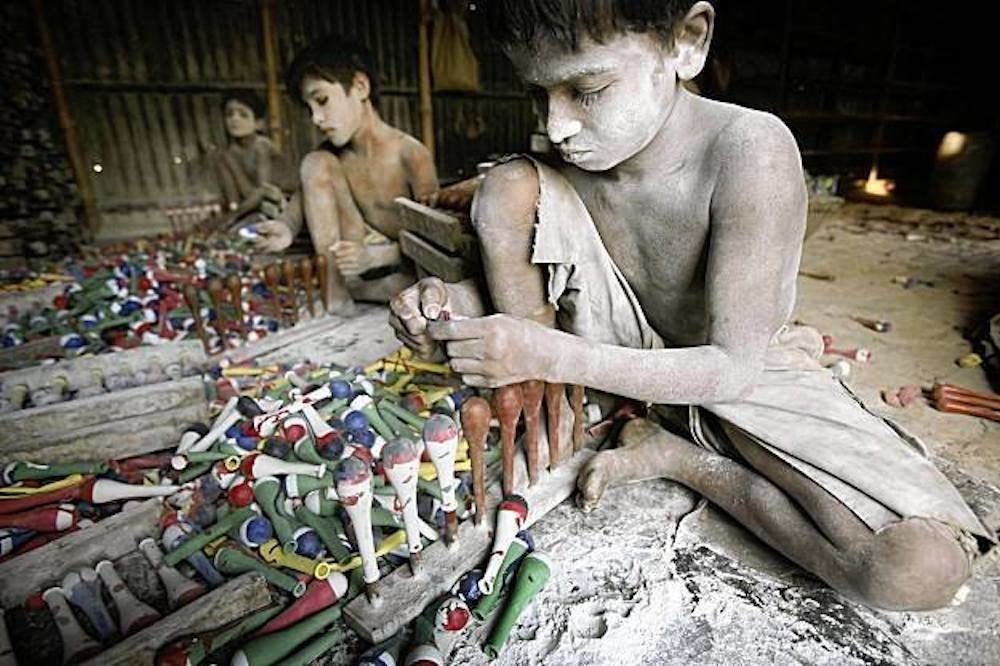The Child Labor (Prohibition & Regulation) Act, 1986
The Child Labor (Prohibition & Regulation) Act, 1986 is a crucial piece of legislation in India that aims to protect children from exploitation and ensure that they receive a proper education. The Act prohibits the employment of children in certain hazardous occupations and processes, and regulates the working conditions of children in other occupations and processes. According to the Act, a child is defined as a person who has not completed the age of 14 years. The Act prohibits the employment of children in certain hazardous occupations and processes, such as work in mines, work with dangerous machinery, work in hazardous substances, and work in hazardous environments.
SOCIAL ASPECT LAWS
Raj K.
2/9/20232 min read


The Child Labor (Prohibition & Regulation) Act, 1986 is a crucial piece of legislation in India that aims to protect children from exploitation and ensure that they receive a proper education. The Act prohibits the employment of children in certain hazardous occupations and processes, and regulates the working conditions of children in other occupations and processes.
According to the Act, a child is defined as a person who has not completed the age of 14 years. The Act prohibits the employment of children in certain hazardous occupations and processes, such as work in mines, work with dangerous machinery, work in hazardous substances, and work in hazardous environments.
The Act also regulates the working conditions of children in other occupations and processes, by setting working hours, breaks, and holidays, and by providing for the maintenance of records and registers. Employers are required to display notices in their workplaces, informing workers of their rights under the Act, and of the penalties for non-compliance.
The Act provides for the appointment of authorities at the central and state level, who are responsible for enforcing the provisions of the Act. These authorities have the power to inspect the records of employers, to investigate complaints of child labor, and to take appropriate action to ensure compliance with the provisions of the Act.
One of the key features of the Child Labor (Prohibition & Regulation) Act is the requirement for employers to obtain a certificate of registration and a license to employ children. The Act also provides for the imposition of penalties for the employment of children in contravention of the provisions of the Act, and for the prosecution of employers who violate the provisions of the Act.
The Child Labor (Prohibition & Regulation) Act is an important piece of legislation that provides for the protection and welfare of children in India. The Act is aimed at ensuring that children receive a proper education, and are not exploited for economic gain. The Act is an important step towards ensuring the rights of children in India, and towards creating a more equitable and just society.
However, despite the provisions of the Child Labor (Prohibition & Regulation) Act, child labor continues to persist in India, and the exploitation of children remains a significant challenge. This highlights the need for continued efforts to enforce the provisions of the Act, and to provide support and rehabilitation to children who are subjected to child labor.
In conclusion, the Child Labor (Prohibition & Regulation) Act is a critical piece of legislation that has the potential to improve the lives of millions of children in India, and to eradicate the practice of child labor in the country. While there is still much work to be done to ensure its effective implementation and enforcement, the Act remains a crucial step towards a more equitable and just society for all.
North India - Delhi NCR
UTTAR PRADESH : B-122, Sector-Omicron-1A, Greater Noida, Gautam Budh Nagar, Uttar Pradesh, India - 201310
Hours
I-V 9:00-18:00
VI - VII Closed


Copyright
We have @SarvePermits & Legal Advisory Pvt Ltd's original, exclusive and copyright protected content for you. Don't miss out on the opportunity and get access to our informative content today! #CopyrightProtected #OriginalContent #SarvePermitsAndLegal. If you have any questions about using our content, please contact us for permission. #copyright #protectourproperty #IP #SarvePermitsAndLegalAdvisoryPrivateLimited.
Western India - Maharashtra
MUMBAI : Office No.- 1408, Ghanshyam Enclave, Opp. Lalji Pada Police Station, Link Road, Kandivali West, Mumbai
South India - Karnataka
BANGALORE : B-2, Ground Floor, Museum Terrace, 29 Museum Road, Bangalore-560001
RESIDENCE : 50808, Tower 5, Bhartiya City Nikoo Homes 1, Thanisandra Road, Kannur, Bangalore - 560064
Eastern India - Jharkhand
BOKARO : 689, Sector-1/C, Bokaro Steel City, Dist.- Bokaro, Jharkhand -827001
